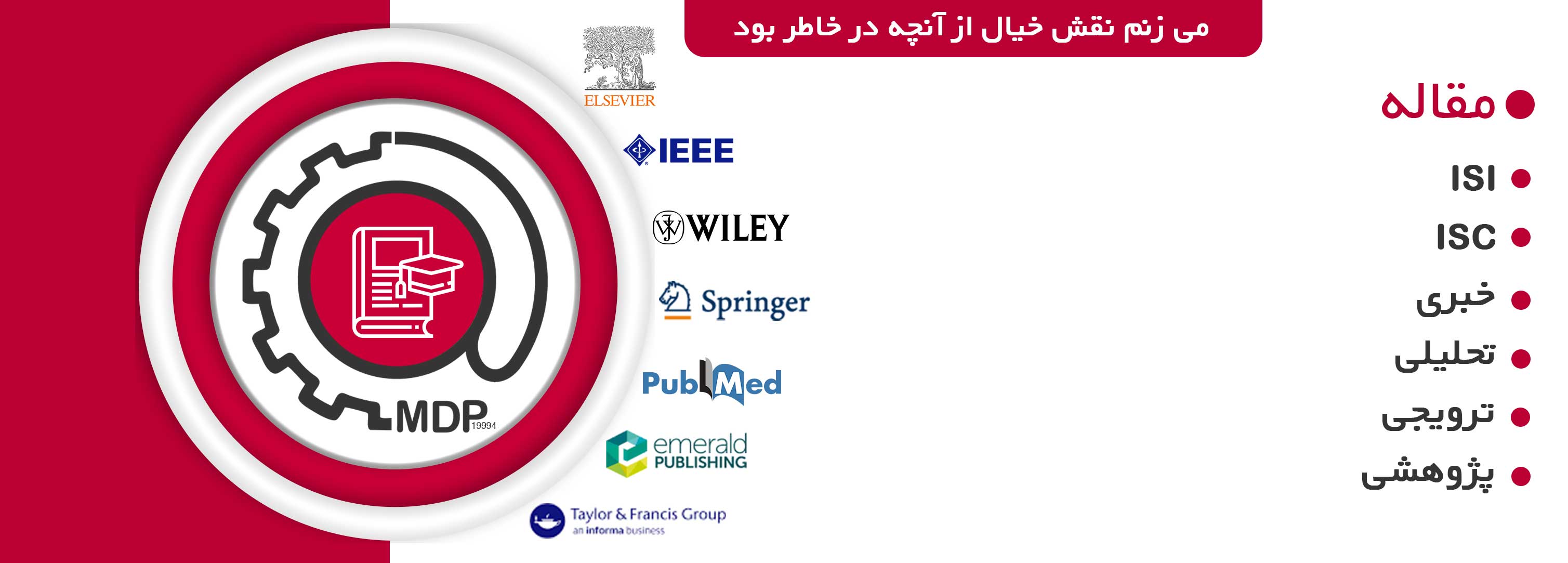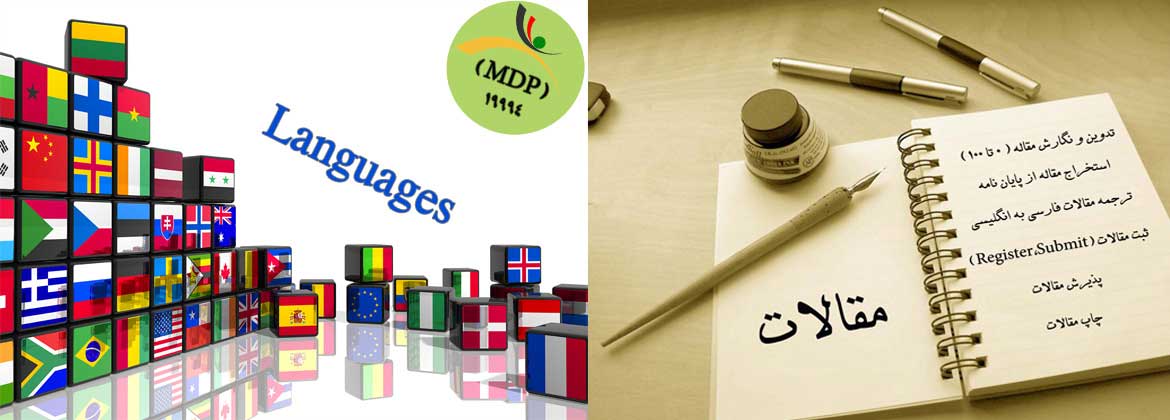
تلههای رایج در نگارش علمی و راههای جلوگیری از آنها
نگارش علمی یکی از مهمترین مهارتها برای پژوهشگران، دانشجویان و اساتید دانشگاهی است. اما این مسیر پر از چالشها و تلههایی است که اگر از آنها آگاه نباشید، ممکن است کیفیتمقاله شما را کاهش دهد یا حتی شانسپذیرش آن درمجلات معتبر بینالمللی را از بین ببرد.
در این مطلب، به رایجترین اشتباهات در نگارش علمی میپردازیم و راهکارهای عملی برای اجتناب از آنها ارائه میدهیم.
انتخاب موضوع
انتخابموضوع پژوهش یکی از حیاتیترین مراحل فرآیند تحقیقات علمی محسوب میشود که نیازمند دقت و تخصص ویژه است.
بسیاری از پژوهشگران، به ویژه در مراحل ابتدایی فعالیت علمی خود، در دام انتخاب موضوعاتی میافتند که یا بیش از حد گسترده هستند و یا به شکلی غیرضروری محدود شدهاند.
این اشتباه استراتژیک میتواند پیامدهای جدی داشته باشد؛
از هدر رفت زمان و انرژی گرفتهتاکاهش چشمگیر شانس پذیرش مقاله در مجلات معتبر بینالمللی.
موضوعات بیش از حد کلی مانند "بررسی تأثیر فناوری بر آموزش" معمولاً فاقد تمرکز لازم برای یک پژوهش علمی جدی هستند.
از سوی دیگر، موضوعات بسیار محدود مانند "تأثیر رنگ آیکونهای اپلیکیشن آموزش ریاضی بر یادگیری دانشآموزان پایه سوم دبستان در منطقه ۲ تهران" ممکن است با کمبودمنابع پژوهشی مواجه شوند.
برای یافتن نقطه تعادل در این زمینه، پژوهشگر باید به دقت ادبیات موضوع را بررسی کند و با اساتید مجرب مشورت نماید.

یک موضوع پژوهشی ایدهآل باید چهار ویژگی کلیدی را دارا باشد:
- دارای محدوده مشخص و قابل مدیریت باشد تا در چارچوب زمانی و منابع موجود قابل انجام باشد.
- حاوی عنصری از نوآوری باشد تا به گسترش مرزهای دانش کمک کند.
- · منابع و دادههای کافی برای بررسی آن موجود باشد.
- از اهمیت علمی و کاربردی برخوردار باشد تا مورد توجه جامعه آکادمیک قرار گیرد.
در این مسیر پیچیده، تیم تخصصی ما با بهرهگیری از روشهای علمی پیشرفته مانندمرور سیستماتیک مقالات،تحلیلهای کتابسنجیوبررسی پایگاههای داده معتبر، آماده ارائه خدمات جامع به پژوهشگران است.
خدمات شامل مشاوره در انتخاب موضوع، تدوین پروپوزال حرفهای، راهنمایی در مراحل مختلف تحقیق و نهایتاً کمک به انتشار نتایج در مجلات معتبر میشود.
شناخت مخاطب: کلید ارتباط مؤثر در نگارش علمی
یکی از چالشهای مهم درنگارش مقالات علمی، تنظیم محتوا بر اساس نیازهای مخاطباست.
هر پژوهشگر باید پیش از شروع نگارش، به این سؤالات پاسخ دهد:
- مقاله من برای چه کسانی نوشته میشود؟
- چه سطحی از دانش تخصصی دارند؟
- چه انتظاری از محتوای من دارند؟
اشتباه در تشخیص این موارد میتواند به دو شکل ظاهر شود:
یامقاله با اصطلاحات پیچیده و غیرضروری، برای مخاطبان عمومی غیرقابل فهم میشود، یا با توضیحات مقدماتی بیش از حد، برای متخصصان خستهکننده خواهد شد.
راه حل این مشکل در «سطحبندی محتوا» نهفته است.
برای مثال، میتوان در بخش چکیده ومقدمه از زبان سادهتر استفاده کرد، در حالی که در بخشروششناسی و نتایج، به جزئیات تخصصی پرداخت.
همچنین، استفاده از پیوستها برای توضیح مفاهیم پایه یا واژهنامه برای اصطلاحات تخصصی میتواند به انعطافپذیریمقاله بیفزاید.
به خاطر داشته باشید که یک مقاله خوب، مقالهای است که بتواند پیام خود را به شکلی مؤثر به تمام گروههای مخاطب منتقل کند.
برای دریافت مشاوره تخصصی و استفاده از خدمات ما، میتوانید همین امروز با کارشناسان مجرب ما تماس بگیرید. ما با ارائه تحلیل رایگان سنگبنای پژوهش شما، این اطمینان را ایجاد میکنیم که تحقیقتان بر پایههای مستحکم علمی استوار باشد.

رعایت ساختار استاندارد مقاله
یکمقاله علمی با ساختار ضعیف مانند خانهای بدون نقشه است. ممکن است محتوای ارزشمندی داشته باشد، اما هیچکس نمیتواند به راحتی آن را درک کند.
بسیاری از پژوهشگران بادادههای عالی و نتایج قابل توجه، تنها به دلیلعدم رعایت اصول ساختاربندی، شانس انتشار درمجلات معتبر را از دست میدهند.
ساختار منسجم نهتنها خواناییمقاله را افزایش میدهد، بلکه اعتبار علمی شما را نیز تقویت میکند.
راهکار ساده اما مؤثر:
پیش از نگارش، یک نقشه کلی از مقاله تهیه کنید.
این نقشه باید شامل بخشهای اصلی (مقدمه،روششناسی،یافتهها و بحث) و زیربخشهای مرتبط باشد.
هر پاراگراف باید مانند حلقهای از یک زنجیر، بهصورت منطقی به پاراگراف قبل و بعد خود متصل شود.
استفاده از عبارات انتقالی مناسب مانند "در نتیجه"، "همچنین"، "برخلاف انتظار" به ایجاد این پیوند کمک میکند.
بهخاطر داشته باشید که داوران مجلات در اولین نگاه،ساختار مقاله شما را ارزیابی میکنند.
مقالهای با ساختار قوی میتواند حتی قبل از بررسی عمیق محتوا، نظر مثبت داوران را جلب کند.
اگر در سازماندهی محتوای علمی خود نیاز به راهنمایی دارید، کارشناسان ما آماده ارائه مشاوره تخصصی هستند. یک ساختار مناسب، سرمایهگذاری هوشمندانه برای موفقیت پژوهش شماست.
زبان و نگارش صریح
در دنیای پژوهش، قدرت واقعی نه در پیچیدهگویی، بلکه در سادهسازی هوشمندانه مفاهیم نهفته است. بسیاری از محققان به غلط تصور میکنند استفاده از جملات طولانی و اصطلاحات پیچیده، بر عمق علمی کارشان میافزاید، در حالی که این رویکرد تنها مانع ارتباط مؤثر با خواننده میشود.
یک مقاله علمی خوب باید مانند یک گفتگوی روشن و جذاب باشد، نه معمایی که نیاز به تفسیر دارد.
چگونه نوشتار خود را شفافتر کنیم؟
- هر جمله را حداکثر در 25-20 کلمه بیان کنید.
- از افعال فعال به جای منفعل استفاده نمایید.
- مفاهیم پیچیده را با مثالهای ملموس توضیح دهید.
پس از نوشتن هر بخش، از خود بپرسید: "آیا مادربزرگم هم این را میفهمد؟"
نگارش علمی اثربخش نیازمند تعادل ظریف بین دقت علمی و وضوح بیان است. بسیاری از پژوهشگران به اشتباه تصور میکنند استفاده از اصطلاحات پیچیده و جملات طولانی، نشانهای از عمق علمی آنهاست. اما حقیقت این است که بزرگترین دانشمندان جهان، پیچیدهترین مفاهیم را به سادهترین شکل ممکن بیان میکنند.
چرا باید از تکلفنویسی پرهیز کرد؟
- خوانندگان را خسته و سردرگم میکند.
- تمرکز را از یافتههای مهم منحرف میسازد.
- ممکن است نشانه عدم تسلط واقعی بر موضوع باشد.
- احتمال سوءتفاهم و تفسیر نادرست را افزایش میدهد.
چگونه زبان مقاله را شفافتر کنیم؟
هر جمله = یک ایده اصلی
- از انباشتن مفاهیم مختلف در یک جمله بپرهیزید.
- کلمات ساده اما بیان قوی داشته باشید. مثلا به جای "به انجام رساندن" بنویسید "انجام داد"
- از جملات کوتاه استفاده کنید. میانگین 15-20 کلمه برای هر جمله ایدهآل است.
- مثالهای ملموس به کار ببرید. مفاهیم انتزاعی را با نمونههای عینی توضیح دهید.
پیش از ارسال مقاله، آن را برای فردی غیرمتخصص بخوانید.
اگر توانست مفهوم اصلی را درک کند، نشانه خوبی از شفافیت نوشتار شماست.
به یاد داشته باشید، هدف نهایی پژوهش، انتقال دانش است نه نمایش واژگان!
پیشنهاد ویژه:تیم ویراستاران حرفهای ما میتوانند با حفظ اصالت علمی، مقاله شما را به زبانی روان و جذاب تبدیل کنند. یکمقاله خوب مانند پنجرهای شفاف است که به راحتی میتوان از آن به عمق پژوهش شما نگریست.
سادگی به معنای سطحینویسی نیست، بلکه هنر بیان دقیق مفاهیم با کمترین کلمات و بیشترین تأثیر است. پژوهش شما ارزشمند است.
اجازه دهید این ارزش با مانع جملات پیچیده پنهان نشود!

اصول اخلاق پژوهشی
هر پژوهش معتبر بر پایه اصول اخلاقی استوار است.
رعایت این اصول نه تنها نشانه حرفهایبودن پژوهشگر است، بلکه ضامن پذیرش کارهای علمی در مجلات معتبر محسوب میشود.
متأسفانه برخی نویسندگان، گاه به دلیل بیدقتی یا ناآگاهی، مرتکب تخلفاتی میشوند که میتواند عواقب جبرانناپذیری برای آنها داشته باشد.
سرقت ادبی از شایعترین مشکلات اخلاقی در نگارش علمی است.
این مسئله زمانی رخ میدهد که نویسنده بدون ذکرمنبع، از آثار دیگران استفاده میکند. چنین رفتاری نه تنها غیراخلاقی است، بلکه ممکن است به رد مقاله و حتی محرومیت نویسنده از انتشار آثارش منجر شود.
برای پیشگیری از این مشکلات، لازم است نویسندگان با دقت تمام منابع مورد استفاده را ذکر کنند و از ابزارهای تشخیص سرقت ادبی بهره ببرند. همچنین، ارائه دادههای دقیق و بدون تحریف، از دیگر الزامات اخلاقی در پژوهش است.هرگونه دستکاری در نتایج یا بزرگنمایی یافتهها، اعتبار علمی پژوهش را خدشهدار میکند.
رعایت اخلاق پژوهشی، سرمایهگذاری برای آینده علمی هر پژوهشگر محسوب میشود.
نویسندگانی که به این اصول پایبند باشند، نه تنها مورد احترام جامعه علمی قرار میگیرند، بلکه شانس پذیرش مقالاتشان در مجلات معتبر نیز افزایش مییابد. بررسی دقیق مقاله پیش از ارسال و مشورت با متخصصان این حوزه، میتواند از بروز بسیاری از مشکلات جلوگیری کند.
توجه به جزئیات: کلید حرفهایگری در نگارش علمی
در عرصه پژوهش، دقت در جزئیات کوچک میتواند تفاوت میان یکمقاله معمولی و یک اثر ماندگار علمی را مشخص کند. بسیاری از پژوهشگران با وجود صرف ماهها زمان برای انجام تحقیق، در آخرین مرحله - یعنی ویرایش نهایی - دچار سهلانگاری میشوند. این در حالی است که داوران مجلات معتبر، به کوچکترین اشتباهات املایی، گرامری یا عددی به دیده تردید مینگرند.
چگونه میتوان از این تله اجتناب کرد؟
نخست آنکه باید پذیرفت که هیچ نویسندهای، حتی باتجربهترینها، نمیتوانند تمام خطاهای کار خود را تشخیص دهند.
بنابراین استفاده از راهکارهای زیر ضروری است:
- مقاله را با فاصله زمانی و با ذهنی تازه در چند مرحله بررسی کنید.
- ابزارهایی مانندGrammarly یاGinger میتوانند در شناسایی خطاهای پایه کمککننده باشند.
- از همکاران یا مشاوران بخواهید مقاله را با دقت بخوانند.
- توجه ویژه به دادهها داشته باشید. اعداد، فرمولها و ارقام را جداگانه و با منبع اصلی مقایسه کنید.
یک مقاله علمی خوب باید هم از نظر محتوایی قوی باشد و هم از نظر ظاهری بینقص. این دو عنصر مکمل یکدیگرند و غفلت از هر کدام میتواند زحمات شما را بیثمر کند.
خدمات تخصصی ما در زمینه ویرایش علمی میتواند خیال شما را از بابت دقت و کیفیت نهایی مقاله راحت کند. با بهرهگیری از ویراستاران مجرب و آشنا با استانداردهای مجلات معتبر، ما میتوانیم مقاله شما را به سطح مطلوب برسانیم.
به یاد داشته باشید که در دنیای پژوهش، توجه به جزئیات نه یک انتخاب، بلکه یک ضرورت حرفهای است. برای دریافت مشاوره رایگان در این زمینه، همین امروز با ما تماس بگیرید.
محدودیتهای پژوهش
برخلاف تصور برخی پژوهشگران، بیان صادقانه محدودیتهای یک مطالعه نه تنها از ارزش کار نمیکاهد، بلکه نشاندهنده بلوغ علمی و درک عمیق محقق از موضوع است. بسیاری ازمقالاتی که به ظاهر بینقص به نظر میرسند، در واقع به دلیل نادیده گرفتن محدودیتهای اساسی، توسطداوران مجلات معتبر رد میشوند.
چرا باید محدودیتها را شفاف بیان کرد؟
- اعتبار علمی پژوهش را افزایش میدهد.
- به خوانندگان کمک میکند نتایج را در چارچوب مناسب تفسیر کنند.
- مسیر تحقیقات آینده را مشخص میسازد.
- نشاندهنده رویکرد واقعبینانه پژوهشگر است.
نحوه بیان مؤثر محدودیتها:
- از عبارات مبهم مانند "ممکن است برخی محدودیتها وجود داشته باشد" پرهیز کنید.
- تأثیر هر محدودیت را بر یافتهها توضیح دهید.
- راهکارهای جبرانی که اعمال کردهاید را ذکر کنید.
- پیشنهادهای تحقیقاتی برای رفع این محدودیتها در آینده ارائه دهید.
مثال عملی:
به جای گفتن "این مطالعه محدودیتهایی داشت"، بنویسید:
"محدودیت اصلی این پژوهش، نمونهگیری از یک منطقه جغرافیایی خاص بود که ممکن است تعمیمپذیری نتایج را تحت تأثیر قرار دهد. برای کاهش این اثر، ما..."
پیشنهاد ویژه: تیم مشاوره پژوهشی ما میتواند به شما کمک کند تا:
- محدودیتهای واقعی مطالعه خود را به درستی شناسایی کنید
- آنها را به شیوهای حرفهای و علمی بیان نمایید
- راهکارهایی برای تحقیقات آینده پیشنهاد دهید
یک پژوهشگر حرفهای نه تنها از محدودیتهای کار خود آگاه است، بلکه از آنها به عنوان فرصتی برای توسعه دانش استفاده میکند. برای دریافت راهنمایی تخصصی در این زمینه، همین امروز با ما تماس بگیرید.
قالببندی مناسب
نگارش علمی تنها به محتوای تحقیق محدود نمیشود، بلکه نحوه ارائه و فرمتبندی آن نیز از اهمیت ویژهای برخوردار است.
یک مقاله با محتوای عالی اما با فرمتبندی ضعیف، مانند گوهری قیمتی است که در ظرفی نامناسب عرضه شده باشد.
رعایت اصول فرمتبندی نه تنها خوانایی مقاله را افزایش میدهد، بلکه نشاندهنده دقت و حرفهایبودن پژوهشگر است.
هرمجله علمی دارای دستورالعملهای خاصی برای فرمتبندی مقالات است که باید به دقت رعایت شوند.
این دستورالعملها معمولاً شامل مشخصاتی مانند نوع و اندازه فونت، فاصله خطوط، حاشیهها، سبک ارجاعدهیو ساختار کلی مقالهمیشوند.
توجه به این جزئیات ظاهری اگرچه ساده به نظر میرسد، ولی تأثیر قابل توجهی بر نظر داوران دارد.
برای دستیابی به فرمتبندی مناسب، بهتر است پیش از شروع نگارش، دستورالعملهایمجله هدف را به دقت مطالعه کنید.
استفاده از قالبهای استاندارد مانندAPA یاIEEE میتواند کمککننده باشد. همچنین، یکدستی در بهکارگیری عناصر مختلف مقاله از جمله تیترها، جداول، نمودارها و ارجاعات، از اهمیت ویژهای برخوردار است.
ویرایش نهاییمقاله از نظر فرمتبندی، مرحلهای است که نباید ساده گرفته شود.
بهتر است پس از اتمامنگارش، زمانی را به بازبینی دقیق فرمت مقاله اختصاص دهید. در این مرحله میتوانید از ابزارهای مختلف فرمتبندی نیز استفاده کنید.
به خاطر داشته باشید که فرمتبندی مناسب، اولین چیزی است که داوران مجله متوجه آن میشوند و میتواند بر کل روند ارزیابی مقاله تأثیر بگذارد. بنابراین، ارزش دارد که زمان و دقت کافی را به این جنبه از مقالهنویسی اختصاص دهید.

نگارش علمی اثربخش
در عرصه پژوهش علمی، کیفیت محتوا تنها بخشی از موفقیتیک مقاله محسوب میشود.
نحوه ارائه و بستهبندی ایدهها و یافتههای پژوهشی نقش تعیینکنندهای درپذیرش مقاله دارد.
پژوهشگرانی که بهاصول نگارش علمی توجه کافی داشته باشند، نه تنها شانس بیشتری برایانتشار کارهای خود در مجلات معتبر خواهند داشت، بلکه تأثیرگذاری پژوهششان بر جامعه علمی نیز به مراتب بیشتر خواهد بود.
بهروز بودن محتوای پژوهشی از الزامات اساسی یک مقاله علمی معتبر است.مطالعه مستمر جدیدترین مقالات منتشر شده در حوزه تخصصی، شرکت در همایشهای علمی و تعامل با پژوهشگران دیگر، به محقق کمک میکند تا از آخرین تحولات و پیشرفتهای رشته خود مطلع باشد. این رویکرد نه تنها کیفیت پژوهش را ارتقا میبخشد، بلکه از تکرار ناخواسته مطالعات پیشین نیز جلوگیری میکند.
انتخاب مجله مناسب
انتخاب مجله مناسب برایانتشار مقاله، تصمیمی استراتژیک در فرآیند پژوهش محسوب میشود.
تطابق موضوع مقاله با حوزه تخصصیمجله، توجه به معیارهای کیفی و سطح علمی مجله، و رعایت دقیق دستورالعملهای نویسندگان از جمله عواملی هستند که میتوانند سرنوشت یک مقاله را تعیین کنند. ارسال مقاله به مجلهای که با محتوای آن تناسب ندارد، معمولاً به نتیجه مطلوبی منجر نخواهد شد.
رعایت اصول نگارش علمی
رعایت اصولنگارش علمی شامل توجه به ساختار مقاله، انسجام منطقی مطالب، وضوح بیان، و دقت در ارائه جزئیات فنی است.
مقالهای که از نظر ساختاری ضعیف باشد، حتی اگر از محتوای علمی ارزشمندی برخوردار باشد، ممکن است نتواند نظر مثبت داوران را جلب کند. ویرایش دقیق و بازبینی چندباره مقاله پیش از ارسال، میتواند از بسیاری از خطاهای رایج جلوگیری کند.
تعامل با جامعه علمی و دریافت بازخورد از همکاران و متخصصان، فرصتی ارزشمند برای ارتقای کیفیت مقاله فراهم میآورد. این رویکرد نه تنها به شناسایی نقاط ضعف احتمالی کمک میکند، بلکه امکان بهرهگیری از دیدگاهها و پیشنهادهای سازنده را نیز فراهم میسازد.
پژوهشگری که با ذهنی باز به نقدها گوش میدهد، معمولاً نتایج بهتری کسب میکند.
- مطالعه مقالات معتبر و الگوبرداری از آنها
- استفاده از خدمات مشاوره پژوهشی برای بهبود ساختار مقاله
- ویرایش تخصصی قبل از ارسال مقاله
- بررسی سرقت ادبی و رعایت اصول استناددهی
- بازبینی توسط همکاران یا اساتید مجرب
اگر میخواهیدمقالهای باکیفیت و قابلقبول در ژورنالهای معتبر بینالمللی منتشر کنید، آگاهی از این تلهها و تلاش برای اجتناب از آنها ضروری است.
تیم متخصص ما در زمینه مشاوره پژوهشی، ویرایش مقاله و سابمیت به مجلات آماده کمک به شماست.
برای دریافت خدمات حرفهای نگارش و انتشار مقاله، همین امروز با ما تماس بگیرید!
اطلاعات تماس:
Contact Information
Phone: 021-88524117, 021-44268545
WhatsApp/Telegram: 09102340118
Email: این آدرس ایمیل توسط spambots حفاظت می شود. برای دیدن شما نیاز به جاوا اسکریپت دارید
Website: 118daneshgah.com
برای سفارش سریع کلیک کنید.
موسسه پژوهشی ماد دانش پژوهان
تضمین تعهد و پشتیبانی مستمر
کلیدواژه ها:
نگارش علمی. انتخاب موضوع. شناخت مخاطب. ساختار مقاله. زبان و نگارش. اصول اخلاق پژوهشی. توجه به جزئیات. محدودیتهای پژوهش. قالببندی مناسب. ویرایش علمی. اشتباهات رایج در مقالهنویسی و نحوه اجتناب از آنها. جلوگیری از سرقت ادبی. فرار از تله های علمی.مشاوره و انجام و نگارش پروپوزال ارشد و دکتری.مشاوره و انجام و نگارش پایان نامه و تز ارشد و دکتری.مشاوره و تقویت و نگارش مقاله استخراجی ارشد و دکتری.مشاوره و انجام و نگارش مقاله علمی پژوهشی ارشد و دکتری.مشاوره و انجام و مقاله ISIارشد و دکتری.